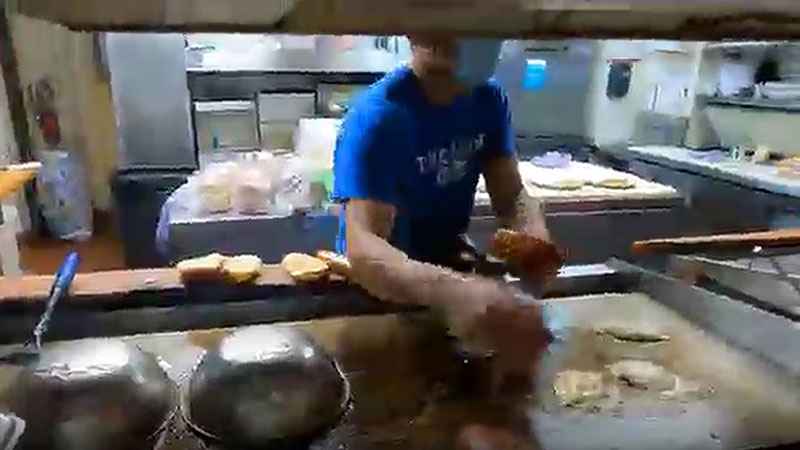Restaurants face worker shortage ahead of governor’s announcement on COVID-19 restrictions
[anvplayer video=”5027025″ station=”998122″]
Even before the pandemic devastated the economy last year, the hospitality industry faced high employee turnover. Now, the need for help is growing again.
“It’s challenging because that workforce is no longer available,” said Tim Mahoney, who owns Loon Café in St. Paul and Minneapolis. “I never thought we would get into this position after COVID restrictions were started to be lifted. I really thought that the workforce would be chomping at the bit to get back to work.”
Restrictions on restaurants eased this spring, allowing businesses to operate at a higher capacity. Ahead of the Twins game at nearby Target Field on Tuesday, Loon Café was bustling with customers. But many downtown offices and businesses are still not fully operational.
“To keep people employed, especially the back of house people, they want their hours, they need their hours to survive,” Mahoney said. “So if I can give them 50 hours one week when the Twins are in town but only 20 hours the next week, it’s challenging for them and it’s challenging for me.”
He said other potential workers may be concerned about safety downtown, the risks of returning to the job during COVID-19, or left the industry to seek employment elsewhere.

[KSTP]
“Everyone in our industry, all my friends that are owners or managers or something like that, we constantly call each other ‘Do you have someone? Is there a wait staff person? Is there a bar tender? Is there a cook? Do you have anyone who can spare 15 or 20 hours?” said Mahoney. “We’ve had ads on Facebook, we’ve had ads in different publications.”
It’s a complex issue, according to Hospitality Minnesota CEO Liz Rammer.
“We had a workforce shortage before the pandemic,” she said. “Our members were telling us years ago that this is a coming crisis and the pandemic really enhanced that crisis.”
Rammer reiterated the shutdown forced some to leave hospitality jobs altogether and said other workers may be staying home to care for elders or children, some of whom may be doing distance learning.
“Then there’s people that are concerned about their personal health and coming back into a work environment, in any type, that could potentially put them in a compromised place,” said Rammer.
It’s a concern for Jason Miller who has been a server for 16 years.
“Masks help a lot to stop the spread of the disease,” Miller said. “People aren’t wearing masks in restaurants because they’re eating or drinking […] and you’re in pretty close proximity.”
He hasn’t worked since last March and plans to wait until he gets his second vaccine shot before heading back to his job.
Miller told 5 EYEWITNESS NEWS the additional $300 and $600 per week unemployment payments during the pandemic have helped during this time. He also believes that may be contributing to the reduced workforce.
“Some people are making more on unemployment,” Miller said. “That’s why they haven’t gone back yet because there aren’t all the hours for people. Nothing is expected to be normal right now.”
The Minnesota Department of Employment and Economic Development is reaching out to those who are unemployed.
“Every single day we are doing proactive calls out to Minnesotans on an unemployment insurance, helping them find opportunities in our economy,” Commissioner Steve Grove said. “That’s not something that we usually do but we’ve had to change our approach given the changing nature of our economy.”
Grove said they’re also hearing of labor shortages in manufacturing and healthcare, in addition to hospitality.
“You’ve got a unique situation right now where you’ve got a good number of folks on unemployment insurance right now, over 200,000, yet you have over 100,000 job vacancies in the state,” Grove said. “And a lot of them are struggling to find workers.”
Since the pandemic began, there’s been a 2% drop in Minnesotans seeking work, according to Grove. The state’s unemployment rate is about 4.2%, the lowest since last March.
“We think the pathway to a stronger labor market is people getting vaccinated,” Grove said. “We’re calling thousands of Minnesotans on unemployment insurance and pointing them towards job opportunities that exist in our economy. Many of them are telling us they’re a little nervous to get out there because of the high levels of the virus in our state.”
The tight hospitality labor market is a return to how it was before the pandemic started, Grove said
“The difference here is though, it’s in different industries, it’s in industries that have been harder hit,” he said.
While DEED is promoting workforce development programs, business owners worry it won’t change the industry soon enough.
“It’s been extremely difficult,” said Mahoney.
He looks forward to Gov. Tim Walz potentially easing restrictions further on Thursday but said it also brings higher demand at a time when they’re understaffed.
“Where’s that worker coming from?” said Mahoney.
For assistance with a job search, click here.